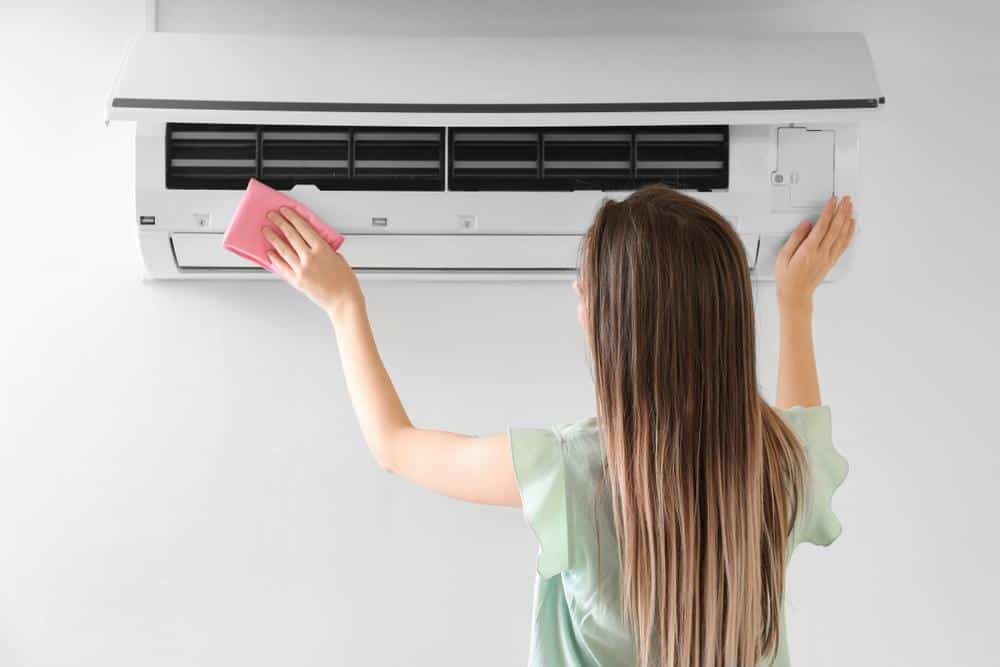
In the world of air conditioning, understanding the various settings and modes can be a bit daunting. One term that often causes confusion is “Vent Mode.” But what exactly is Vent Mode in an air conditioner? How does it work? And when should you use it? This comprehensive guide will answer all these questions and more, providing you with a thorough understanding of Vent Mode and its role in maintaining a comfortable indoor environment.
Vent Mode in an air conditioner is a function that allows outdoor air to enter the room while expelling indoor air. It works by operating the system’s fan without engaging the cooling or heating functions, helping to circulate air within the room and provide some level of comfort without consuming as much energy. Vent Mode is useful in situations where you want to improve air circulation or reduce humidity without actively cooling the room.
What is Vent Mode?
Vent Mode is a function found in many air conditioning systems. This setting allows outdoor air to enter the room while simultaneously expelling indoor air. When the vent is set to “open,” outdoor air is allowed into the room, increasing the pressure within the space and forcing some of the indoor air out. Conversely, when the vent is set to “closed,” the air conditioner circulates and recycles the air inside the room, preventing outside air from entering.
Vent Mode is particularly useful in certain situations, such as when you want to eliminate excess humidity or improve air circulation without actively cooling the room. It’s a feature commonly found in window air conditioners and can significantly contribute to maintaining indoor air quality by introducing fresh outdoor air and expelling stale indoor air.
How Does Vent Mode Work?
Vent Mode works by exchanging or replacing air in a space to provide high indoor air quality. This process involves temperature control, oxygen replenishment, and removal of moisture, odors, smoke, heat, dust, airborne bacteria, carbon dioxide, and other gases.
In the context of air conditioners, Vent Mode typically refers to the operation of the system’s fan without engaging the cooling or heating functions. This mode helps circulate air within the room, providing some level of comfort without consuming as much energy as the full cooling or heating modes.
Benefits of Using Vent Mode
Using Vent Mode in an air conditioner offers several advantages:
- Improved air circulation: Vent Mode helps circulate air within the room without actively cooling it, which can be useful when you want to maintain a comfortable environment without using the cooling function.
- Reduced energy consumption: Operating the air conditioner in Vent Mode uses significantly less energy than other modes, such as cooling, heating, or dry mode.
- Early morning cooling: When temperatures are cool early in the morning, setting the air conditioner to Vent Mode is a great way to circulate the already-cool air without the cost of running the unit’s compressor.
- Prolonged air conditioner life: Continuously running the air conditioner in cooling mode can take a toll on the unit. Using Vent Mode on cooler, less humid days can give your unit a break, potentially prolonging its life.
- Improved indoor air quality: Ventilation helps maintain good air quality by introducing fresh air from outside and removing polluted air from the indoor space.
Drawbacks of Using Vent Mode
While Vent Mode has several benefits, it isn’t without its drawbacks:
- Increased energy consumption: If outdoor air can easily enter, your air conditioner may need to work harder, increasing your energy bills.
- Loss of conditioned air: Your conditioned indoor air, which is at the perfect temperature, can leak out when using Vent Mode.
- Inadequate humidity control: If the fan is running continuously, moisture from the air conditioner may not have a chance to drip outside and could blow back into your house, affecting humidity levels.
- Increased maintenance: Allowing dust from the road and the atmosphere into your space can lead to more frequent maintenance requirements for your air conditioner.
- Reduced air quality: Vent Mode can introduce outdoor pollutants and odors into your indoor space, which may affect air quality and cause discomfort.
When to Use Vent Mode
Vent Mode is most effective when you are already satisfied with the room’s temperature and humidity levels but want the comfort that comes with gently circulating air. It’s ideal for cooler days or times when you want to refresh the stale air in a room.
Vent Mode vs Other Modes
Vent Mode differs from other modes in an air conditioner by allowing outdoor air to enter the room and exhausting indoor air. Other modes like cool, dry, and fan modes focus on cooling, dehumidifying, and circulating the air inside the room, respectively.
Energy Efficiency
Vent Mode, also known as fan mode, on an air conditioner is more energy-efficient compared to other modes like cooling, heating, and dry mode. This is because it takes less power to run the fan than the compressor.
Conclusion
Understanding the role and function of Vent Mode in your air conditioner can help you optimize the unit’s performance, improve your indoor air quality, and potentially even save on energy costs. However, it’s essential to consider the potential drawbacks and adjust your usage accordingly. With a clear understanding of Vent Mode, you can make informed decisions about how best to use your air conditioner for maximum comfort and efficiency.
Frequently Asked Questions
What types of air conditioners have a Vent Mode?
Vent Mode is generally found in window air conditioners and central air conditioning systems. However, it’s always best to check your unit’s manual or consult with the manufacturer to confirm.
Can I use Vent Mode in winter?
Yes, you can use Vent Mode in winter. It can help circulate indoor air and introduce fresh outdoor air without actively heating the room. However, if the outdoor air is very cold, it may affect your indoor temperature.
Does using Vent Mode wear out my air conditioner faster?
No, using Vent Mode does not wear out your air conditioner faster. In fact, it can potentially prolong the life of your unit by giving the compressor a break. However, it may require more frequent maintenance due to the introduction of outdoor dust and pollutants.
Can Vent Mode help eliminate indoor odors?
Yes, Vent Mode can help eliminate indoor odors by introducing fresh outdoor air and expelling stale indoor air. However, it can also introduce outdoor odors into your space.
How do I know if my air conditioner has a Vent Mode?
You can check if your air conditioner has a Vent Mode by looking at the settings on your unit’s control panel or remote. Alternatively, you can refer to the user manual or contact the manufacturer for this information.












